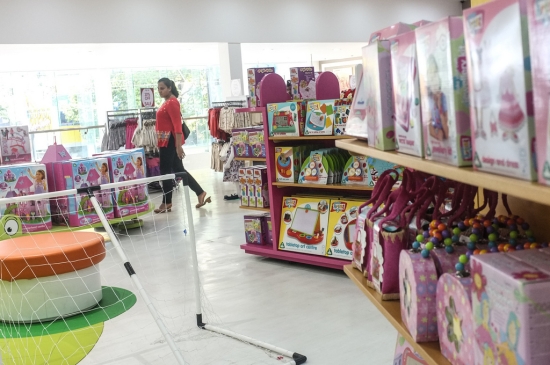While no retailers can be said to have coasted through the recession unscathed, Mothercare suffered particularly at the hands of the economic downturn. Online competition from e-tailers such as Amazon and the ever-expanding market for baby clothing from celebrity lines took a heavy toll on the retailer at a time when consumers aimed to cut spending by as much as possible.

However, it appears that Mothercare’s turnaround plans have finally begun to have a positive effect. The closure of 13 stores in the first quarter, nine of which fell under the Early Learning Centre brand, continued to cut costs and allowed the group to focus on more profitable commercial properties.
Although UK sales fell by 0.9 per cent on a like for like basis, the further development of multi-channel sales platforms has meant that this drop has stabilised somewhat over the past few months. Certain ranges contributed greatly to this progress, with the Direct in Home line contributing further strong growth of 14.6 per cent in the 15 weeks to July 15th.
Group chief executive Simon Calver remains upbeat about the future of Mothercare, claiming that the changes made so far have resonated positively with consumers.
He says; “The UK is very promotional and our goal is to be price competitive whilst delivering cash margin.
“We have continued to improve the basics of value, service and availability for our customers.
“Whilst we still have a way to go, I am encouraged by the improving positive feedback from our customers to the necessary changes in the UK, particularly to product innovation and new clothing ranges, especially Value Essentials.”
Fortunately, the continually sluggish UK sales were more than made up for by Mothercare’s international transactions. In the first quarter alone, the group opened a further 47 stores – an increase of 14 per cent in international floor space.
This now means that Mothercare operates a total of 1,116 franchise stores across 60 countries, equalling a total commercial space of 2,430,000 square feet.
Furthermore, thanks to fluctuations in currency which proved beneficial to the group, international retail sales grew by 14.1 per cent in total. In terms of constant currency, this equates to a sales increase of 11.3 per cent, standing Mothercare in good stead of achieving this year’s goal of 15 per cent constant currency sales growth per annum.
Mr Calver continues; “Overall worldwide network sales growth remains positive.
“Our international markets have once again delivered double-digit sales growth, driven by both positive like for like sales and space growth.”
With the UK and Eurozone consumers remaining cautious in terms of spending, Mr Calver warned that significant growth in these markets this year remains unlikely. However, with business booming in the international division, it seems that the worst is truly over for this iconic British retailer.
Previous Post
Leeds Office Market Sees Strongest Ever Results